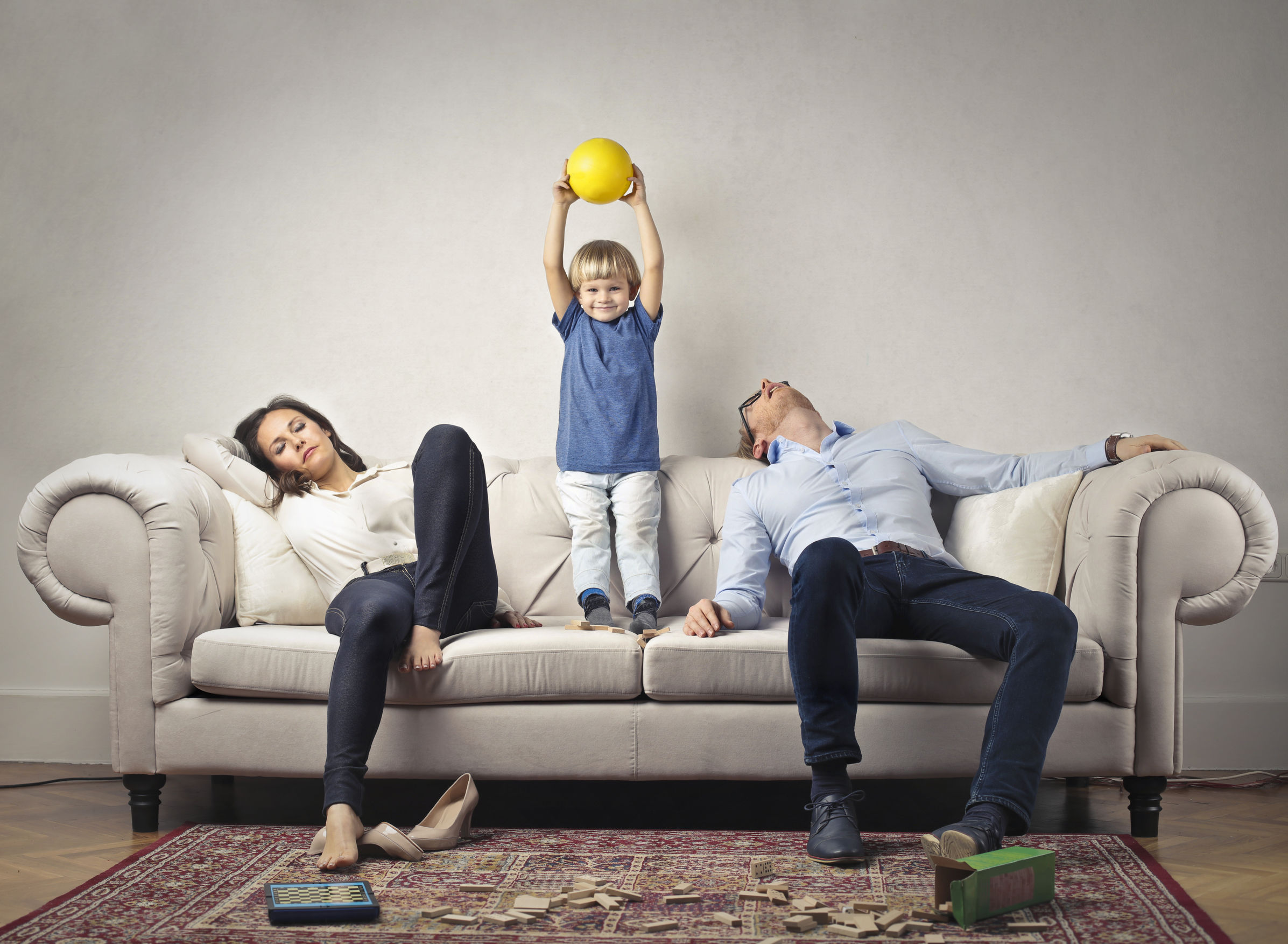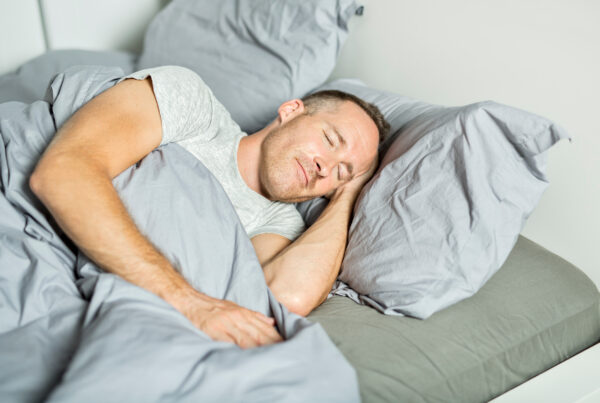”From our community: during the stay home order my family has connected by sharing health goals but most days I feel too tired to participate in the activities. How do I get the energy to be more productive and active with my family?
Reading Time: 10 Minutes
MWi Hacks:
- Learn about some new habits that will increase your energy and productivity
- Get some expert tips on how to implement the ideas and start today!
Health has become a priority for me in the past five years, and I’ve tried dozens of techniques and experiments. I’ve learned a lot from reading Michael Pollan, Darya Rose, Gretchen Reynolds, Mark Sisson — even Mr Money Mustache. Most of the habits below are based on intuition about human evolution, supported by scientific research, and validated by my own experience.
Health is too important to ignore. We can’t talk about productivity and time management without acknowledging the role of energy in making those tactics possible. After all, we’re not machines — we’re humans, and our brains need energy, and to take care of our brains we must take care of our bodies.
Here I’ll share eight daily habits I use to build energy and make time for what matters. These habits form the foundation for all of the tactics I discuss on my blog, Time Dorks. These are the daily defaults that I shoot for—and building them into habits has put me in better shape to attack the important things in my life with greater focus and less procrastination.

1. Get Better Sleep
Why it Matters: You might think of sleep as an enemy of productivity. After all, Elon Musk and Barack Obama (both ultra performers) each reportedly sleep just six hours per night. But they’re exceptions. The truth is, without quality sleep — and plenty of it — you won’t have the energy to make good use of your time. The benefits go way beyond simple rest. Dozens of studies show that sleep reduces your risk of heart disease, diabetes, and obesity. It boosts your immune system. Sleep even improves your memory and mental performance.
What I Do: I wrote a lot about sleep in my post on becoming a morning person. Here are some of my most important habits: Avoiding caffeine after 2 pm. Limiting light exposure (especially from screens) after sunset. Keeping digital devices (except an alarm clock) out of my bedroom. Living a full and active day so I’m actually tired.
How to Start: If you want to improve your sleep, start with your smartphone. Replace your bedtime smartphone habit with something you enjoy reading off-screen: a novel, magazine, comic book, etc. You’ll benefit in two ways: reducing light exposure tells your body it’s bedtime, and skipping social media makes it easier to mentally wind down.
2. Walk to Work (Walk during calls)
Why it Matters: We humans are a species in motion. We evolved to thrive with near-constant movement, most of it walking. So it’s no surprise that walking has vast health advantages, particularly in preventing cardiovascular disease. Even Hippocrates said: “Walking is a man’s best medicine.” But in today’s noisy world, walking is particularly valuable for the mental space it creates — time to think, meditate or listen to music.
What I Do: I walk to work every day — two miles from Russian Hill, through North Beach, and down to our office near the Ferry Building in San Francisco. This is an easy habit to keep because it’s part of everyday life, not a special activity requiring willpower, extra time, or special equipment. Sometimes I listen to podcasts (my favorites are On the Wind and Afford Anything), but most days I use my walking time to mentally “work” on something I’m writing or a tricky design problem.
How to Start: Try one day a week. Pick a “walk to work” day and pair it with something fun: stopping at a great café or catching up on your favorite podcast. If walking all the way to work isn’t an option, try swapping out part of your commute for passage on foot (by getting off one stop early or parking far away). Even switching from driving to taking public transit can add a decent bit of walking — from home to station, transfers, station to work — to your commute. And again, if it sounds overwhelming, start with one day per week. What’s important is finding a way to make walking a part of your normal life.
3. Eat Fat for Breakfast
Why it Matters: After half a century of questionable nutritional science and bad government guidelines, people are beginning to recognize again that fat is an essential and healthy part of our diets. It’s our primary source of energy. It’s necessary for cellular function and repair. It reduces inflammation. Fatty foods are more satisfying and keep you feeling full longer.
What I Do: Fatty foods like eggs, avocado, and fish are my breakfast mainstays. Dietary fat is important at every meal, but it’s particularly good at breakfast, where it can provide a high-energy foundation for the rest of the day. A high-fat breakfast keeps me full longer and helps my mental energy.
How to Start: It doesn’t take any great trick to eat more fat. But people tend to eat what’s familiar and convenient, so keep fatty foods on hand and in stock. Choose restaurants that serve the rights kinds of foods — think quiche and avocado toast, not oatmeal and pancakes. And if this is a big change for your diet, start with one meal a day. I suggest breakfast.
4. Fast
Why it Matters: The science on fasting is a bit thin — for now — but we can look to human history to understand why it’s important. Take the evolutionary perspective: for almost 200,000 years, humans didn’t have regular access to abundant food, so we evolved to thrive in spite of ongoing hunger. And if we look at the more recent past, we can see fasting rituals appear in virtually every human culture: from Catholic lent to Muslim Ramadan to Cherokee vision quests. It’s not a coincidence. In moderation, fasting can help you lose weight, reduce inflammation, and improve brain function.
What I Do: Once or twice a week, I skip breakfast. This is a simple form of fasting that puts roughly 16 hours between dinner and my next meal. It’s relatively easy to do and doesn’t make me seem too weird. (I got the idea from Kevin Rose, who has made a serious study of fasting and worked with Dr. Rhonda Patrick to design several self-experiments.) Beyond the health benefits, I enjoy the 16-hour fast for two reasons. First, it saves time and simplifies my day. And second, my mental clarity improves on the days I fast.
How to Start: First, check with your doctor. Once you have their OK, choose a day — your fast actually starts the day before with a larger-than-usual healthy dinner. Make a plan for the morning (like a project to complete or an activity with your family), then get a good night of sleep (see above for help with that). In the morning, it’s OK to drink water and coffee or tea, but don’t have anything else to eat or drink — it’s a fast! Break the fast with lunch, which like dinner, should be plenty healthy and a bit larger than usual. Don’t worry about committing to a weekly schedule right away — just try the 16-hour fast once and see how it goes.
5. Stand Most of the Time
Why it Matters: Research on the dangers of sitting emerged around 2010, linking sedentary behavior to all sorts of health problems: heart disease, cancer, muscle degeneration, and more. While it’s not exactly shocking that sitting around all day is unhealthy, doctors and other health professionals always assumed that exercise could “undo” the effects of sedentary behavior. Now, researchers no longer believe that’s true. To stay healthy, you need to build frequent, low-intensity movement into your day. In addition to avoiding illness, standing improves blood flow to your brain — making you more focused, mentally sharper, and more productive.
What I Do: In the past year, I’ve made standing my default. It’s a simple mindset shift that translates into all kinds of new behaviors: I use a standing desk at work; I leave my desk during breaks (see below); I walk most places; I carry my groceries and luggage and laundry. I still sit when I’m eating, in a meeting, watching TV, or even just taking a “sit break.” But shifting my mindset from “sitting is normal” to “standing is normal” has helped me change my behavior.
How to Start: If you work at a computer, switching to a standing desk is the best change you can make. But don’t try to jump from always sitting to always standing; the sudden change will cause problems of its own. If possible, use an adjustable desk, or create multiple “workstations” within your desk or office so you can switch from sitting to standing throughout the day. If this isn’t possible, use your sit-down desk but look for other opportunities to move: breaks, meetings, lunch, etc. Try to get up twice an hour.
6. Take Breaks Without Screens
Why it Matters: It’s awfully tempting to check Twitter or Facebook as a break from work. But these kinds of “breaks” don’t renew or relax us — when we see a troubling news story or an envy-inducing photo from a friend, we feel worse, not better. Over time, social media breaks cause even bigger problems by increasing our addiction to pull-to-refresh Infinity Pools. Americans already spend an average of more than an hour on social media every day — do you really want to spend your break time on social media, too?
What I Do: I try to take breaks without screens: gaze out the window, walk around, talk to someone, or grab a snack. By keeping Infinity Pools off my phone and computer, it’s easier to avoid the temptation to check social media — when I type twitter.com into Chrome and realize I’m not signed in, the habit loop is broken and I remember to step away from the screen.
How to Start: Start with a reflection on how you take breaks. For example, are you most likely to reach for your phone, load up Facebook on your computer, or something else? Then look for ways to put some friction into those bad habits. If your problem is Twitter on your smartphone, try uninstalling the app and see how it feels. If you always have Facebook open on your work computer, try signing out and closing the tab. Even a simple in-your-face reminder can help: try writing “stand up” or “look out the window” on a Post-It and stick it to your computer or desk.
7. Do a Quick but Intense Workout
Why it Matters: High-intensity interval training, or HIIT, is not just a time-saving substitute for real exercise. In fact, there’s evidence that it might be better overall than “normal” exercise like running, fitness classes, or messing around with fancy equipment at the gym. In the New York Times, Gretchen Reynolds writes: “Even a few minutes of interval-style exercise increase endurance, squelch appetite and improve metabolic and cardiovascular health in sedentary adults more effectively than traditional prolonged-endurance exercise.” Plus, because it takes as little as 5–10 minutes and requires no special equipment, a high-intensity workout is easy to make time for. You’ll get all the benefits of exercise (especially combined with habits #2 and #5) without having to fit something new into your schedule.
What I Do: With a nudge from Mr Money Mustache, I adopted HIIT as a strength-building habit. Mondays, Wednesdays, and Fridays I complete a combination of variations on push-ups, squats, planks, lifts, and sprints to failure. On Tuesdays and Thursdays I do a stretching routine instead. And every day I walk, stand, lift, and carry — generally moving my body as much as possible.
How to Start: If you want to try HIIT at home, check out this 7-Minute Workout from the New York Times. Mark Sisson also offers a great strength workout (built around bodyweight exercises) as part of his Primal Blueprint program. It describes a getting-started progression for people who aren’t already doing push-ups, squats, planks, lifts, and sprints. (In addition to his book, Mark offers a free PDF here with password PBFPBINTROPDFS.)
8. Do the Chores
Why it Matters: There’s a lot of pressure — from clever makers of on-demand apps, and from experts on time-management and productivity (though hopefully not me) — for the modern busy person to optimize every hour of the day. The typical advice is to outsource almost everything: buying groceries, cooking food, cleaning your home, doing the laundry, shopping, organizing your closet, etc. That’s nonsense.
You can’t be productive all 24 hours of the day. Why not take the opportunity to move your body, rest your brain, save some money, and engage with your neighbors? In other words, why not do your own chores? “Do the Chores” is a small mindset shift that makes each day more balanced and more satisfying.
What I Do: I do most of my own chores, including the aforementioned shopping, cooking, cleaning, laundry, and organizing — not to mention fixing things, managing our money, creating my workout program (see above), and much more. (Thanks to Mr Money Mustache for inspiring me to start this habit, too.) That said, I’m not totally hardcore about it. We use a local dry-cleaner for some of our laundry; we hire a housekeeper twice a month, and we rely on a mechanic to maintain our car. But whenever possible, I try to DIY.
How to Start: Start with one chore you want to “insource.” For the biggest impact, pick one that requires moderate physical activity, isn’t super time-consuming, and doesn’t take all your attention to complete. As an example, consider grocery shopping. If you normally use a delivery service like Instacart, try walking to the store, buying groceries, and carrying them home. You’ll move your body, get some fresh air, and create mental space to think, listen to a podcast, or make a phone call.
To accomplish the things that matter, I need to have good health and abundant energy. That’s the foundation for productivity. When I stick to these eight habits, I have the energy to make my time-management systems work.
MWi would like to thank John Zeratsky, for his expert insights that we were able to share with our community.
To read the original article, please follow this link:
https://medium.com/@jazer/eight-health-habits-you-can-use-to-build-energy-and-get-more-done-every-day-72e4817e660a
More on the Author:
John Zeratsky is a veteran technology designer, keynote speaker, and the bestselling author of Sprint and Make Time.
John helps leaders, entrepreneurs, and professional teams make better use of their time at work and become happier, more engaged humans. As a speaker and facilitator, he has worked with more than 200 of the world’s most important and innovative organizations, including Google, Harvard University, Slack, IDEO, and Netflix.
John has reached millions with his writing about resetting the defaults of busyness and distraction. He’s written two bestselling books and published articles in The Wall Street Journal, TIME, Harvard Business Review, Wired, Fast Company, and many other outlets.
For nearly 15 years, John was a designer for technology companies. At Google Ventures, he helped develop the Design Sprint and worked with startups like Uber, 23andMe, Flatiron Health, Blue Bottle Coffee, and Nest. Previously, John was a designer at YouTube, Google, and FeedBurner, which Google acquired in 2007.
John studied journalism at the University of Wisconsin and graduated from the UW School of Human Ecology, where he’s now an advisor to the Dean and faculty.






